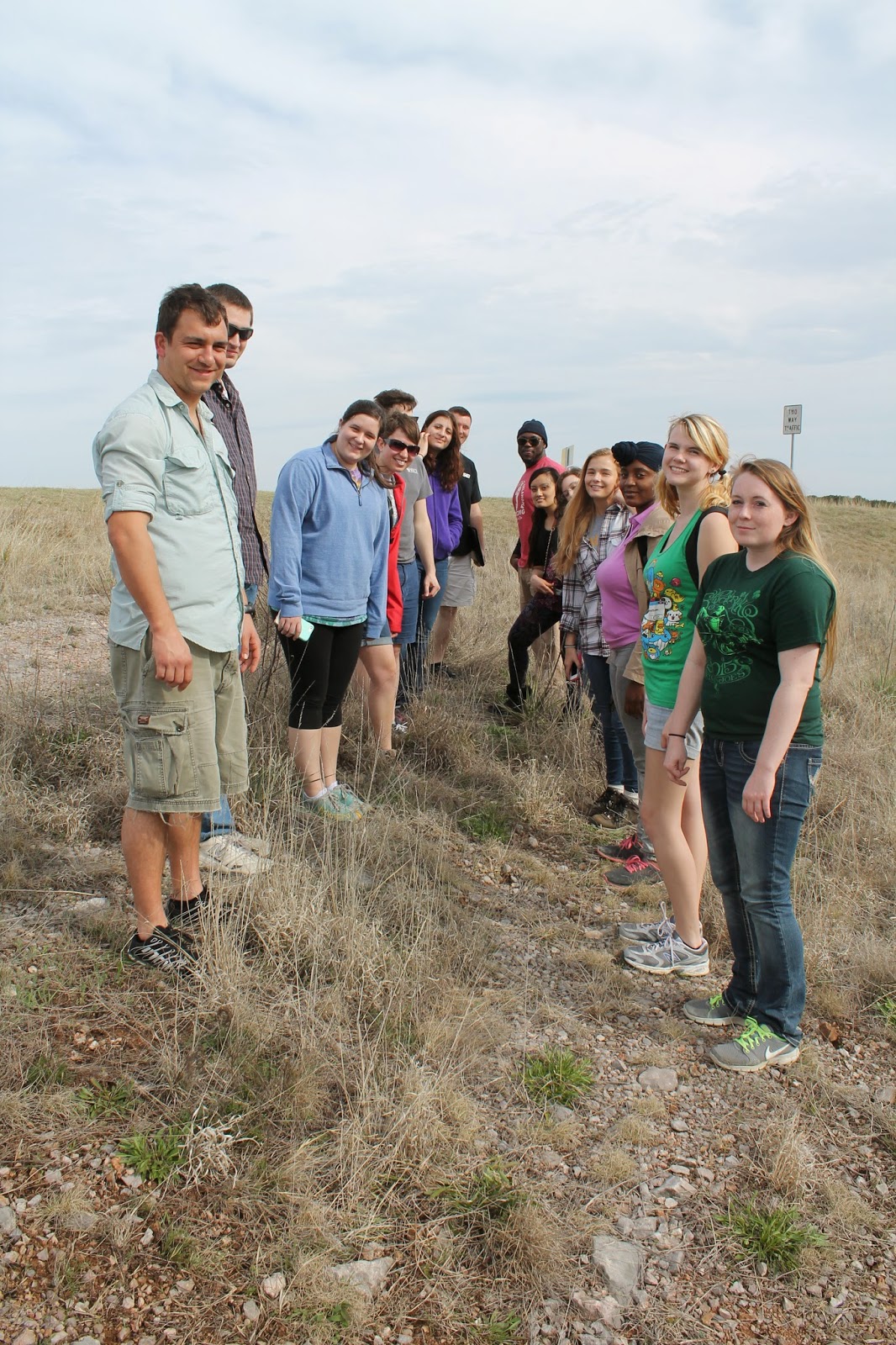On
the Tuesday of the second Oklahoma Evolution Road Trip (see previous entry), the students and instructors drove around south central Oklahoma to look at some amazing geological and
fossil features. Most of the places were the same ones the participants saw on
the first Oklahoma Evolution Road Trip (see links in previous entry). The
students were excited to find so many different kinds of shallow marine
fossils. We saw ammonoids, some of them quite large, and huge numbers of oyster
shells of the species Texigryphaea navia.
Some of them had eroded out of the powdery limestone matrix and were just lying
around. First photo: notice the ammonoid fossil. Second photo: Dianne finds the impression of a large mollusk.
At
a roadcut that exposed Ordovician deposits, students found crinoids and lots of
coral fossils. The corals formed branches, and in many cases the little pits in
which the coral animals live were visible. The first photo shows Victoria looking for fossils, and the second photo shows imbedded fossils of coral and crinoids.
We
visited the museum at Goddard Youth Camp, where Clayton Edgar showed us a cast
of the most complete skeleton of Acrocanthosaurus
atokensis (similar to T. rex), whose footprints we later saw down in Texas.
You can learn a lot about a dinosaur from its skeleton, especially from the
wounds that healed, and the ones that did not.
We
went to the top of the Arbuckle Mountains and looked down on Turner Falls, a
widely popular recreation destination. But that’s not all we saw. We saw
fossils of stromatolites also, images of which I have posted previously. Out of privacy concerns I will indicate only the first names of the students. Left to right, front row: Camille, Dr. Stan Rice, Cadence, Brian, Kelvin, Sujana, Dianne; second row: Molly, Hannah, Kandra, Dr. Gordon Eggleton, Bruce, Turner, David, Kelly, Victoria, Jessica.
The
Arbuckle Mountains are an anticline, in which the oldest deposits are on top.
How did that happen? Geologic forces pushed up the mountains. Subsequent
erosion washed some of them away. The oldest layers, on top of today’s
mountains, used to have all the other layers above them. Ah, but if we claim
that this is how the oldest layers ended up on top, then there should be some
evidence, shouldn’t there? And we saw it. We stopped to see Ordovician
limestone layers that had not only been pushed over on their sides but had been
warped and distorted by the immense pressure. We also saw conglomerate rock
that had filled in a valley during the Pennsylvanian period. Large limestone boulders
had washed violently down from the mountains that were still huge at that time.
Carbonate leached from these boulders had cemented them together into
conglomerate, which is a natural analog of concrete. In the photo, you can see the
students standing on either side of what had been, about 270 million years ago,
a steep cliff.
The
most unexpected part was when most of the students, and myself, had to wait
about 45 minutes at a famous fried pie restaurant while one of the vans made an
emergency side trip. Fried pies are nice, but you can’t talk about fried pies
for 45 minutes. So we decided to play a game. I don’t remember whose idea it
was, but we ended up guessing each other’s spirit animals. One of the students
really liked dogs, so I got the students to figure out how dogs were
domesticated from wolves. And then I joked about my spirit animal. Who am I? I
have not had sex for thirty million years, which means my parasites should have
evolved to drive me to extinction, but they haven’t, because I can dry up and
blow away like dust in the wind and leave my fungal parasites behind [link to
article]. I am a rotifer. I could never have guessed when we left that morning
that I would be in a restaurant telling students about rotifers. We also talked
about marsupials. In the photo, the students are watching a video of a joey
(baby kangaroo) being born.
Our
first field trip day was even better than we could have planned.










No comments:
Post a Comment